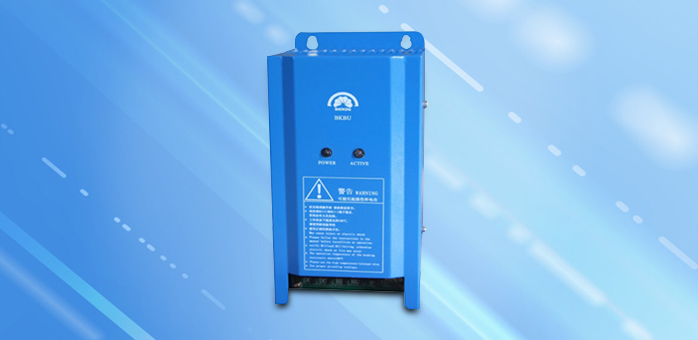What is the braking unit on the frequency converter? What are the characteristics?
23-07-11
The braking unit on the frequency converter refers to a system used to control situations with heavy mechanical loads and very fast braking speed requirements, where the regenerative energy generated by the motor is consumed through the braking resistor, or the regenerative energy is fed back to the power supply.
In some applications, rapid speed reduction is required. According to the principle of asynchronous motors, if the slip is greater, the torque will also increase. Similarly, the braking torque will increase with the increase of speed reduction rate, greatly shortening the system speed reduction time, accelerating energy feedback, and rapidly increasing the DC bus voltage. Therefore, it is necessary to quickly consume this feedback energy and maintain the DC bus voltage below a certain safe range.

This article mainly discusses the main functions, advantages, and action process of the braking unit, as follows.
1、The main functions of the braking unit
In some applications, rapid speed reduction is required. According to the principle of asynchronous motors, if the slip is greater, the torque will also increase. Similarly, the braking torque will increase with the increase of speed reduction rate, greatly shortening the system speed reduction time, accelerating energy feedback, and rapidly increasing the DC bus voltage. Therefore, it is necessary to quickly consume this feedback energy and maintain the DC bus voltage below a certain safe range. The main function of the braking unit system is to quickly consume this energy (energy is converted into thermal energy by the braking resistor and dissipated). It effectively compensates for the shortcomings of slow braking speed and small braking torque (≤ 20% of rated torque) of ordinary frequency converters, and is very suitable for some situations that require fast braking but low frequency.
2、 Advantages of braking units
Due to the short-term operation of the braking unit, which means that the power on time is very short, the temperature rise of the braking unit cannot reach a stable temperature rise during the power on time; The intermittent time after each power on is longer, during which the temperature is enough to drop to the same level as the ambient temperature. Therefore, the rated power of the braking resistor will be greatly reduced, and the price will also decrease accordingly; In addition, due to the fact that there is only one IGBT with a braking time of ms level, the transient performance indicators for power tube opening and closing are required to be low, and even the shutdown time is required to be as short as possible to reduce the shutdown pulse voltage and protect the power tube; The control mechanism is also relatively simple and easy to implement. Due to the above advantages, it is widely used in potential loads such as cranes and in situations where quick braking is required but short-term working conditions are required.
3、 The action process of the braking unit
1. When the motor decelerates under the action of external forces, it operates in a generating state, generating regenerative energy. The three-phase AC electromotive force generated is rectified by a three-phase fully controlled bridge composed of six inverter specific energy feedback units and continuous current diodes in the inverter section of the frequency converter, which continuously increases the DC bus voltage inside the frequency converter.
2.When the DC voltage reaches a certain voltage (the opening voltage of the braking unit), the power switch of the braking unit is opened, and the current flows through the braking resistor.
3. The braking resistor releases heat, absorbs regenerative energy, reduces the motor speed, and reduces the DC bus voltage of the frequency converter.
4. When the DC bus voltage drops to a certain voltage (braking unit stop voltage), the power tube of the braking unit is turned off. At this point, no braking current flows through the resistor, and the braking resistor naturally dissipates heat, reducing its own temperature.
5.When the voltage of the DC bus rises again and causes the braking unit to act, the braking unit will repeat the above process to balance the bus voltage and ensure the normal operation of the system.


